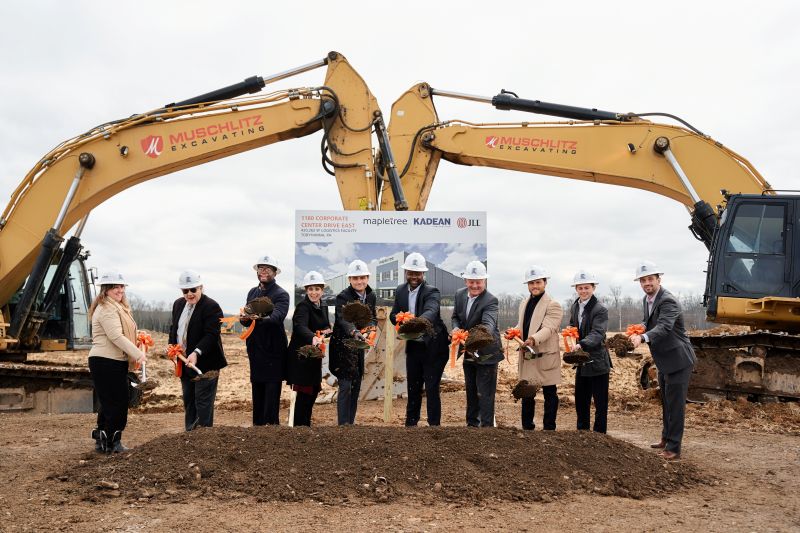State Infrastructure Averages “C”, in Line with National Trends – Maryland Association of Counties

Report on Maryland’s 2025 Infrastructure Assessment and Alignment with Sustainable Development Goals
Executive Summary
A 2025 report from the Maryland Section of the American Society of Civil Engineers has assigned the state’s infrastructure an overall grade of “C” for the fifth consecutive year. This grade signifies that while core systems are functional, they require substantial and sustained investment to meet current and future demands, particularly in the context of achieving the United Nations Sustainable Development Goals (SDGs). Infrastructure sectors managed at the county level—including roads, water systems, and waste management—are performing adequately but face vulnerabilities from aging assets, rising costs, and increasing regulatory standards, directly impacting progress on key SDGs.
Sector-Specific Analysis and SDG Linkages
The report provides a detailed assessment of various infrastructure categories, highlighting areas where Maryland’s performance aligns with or diverges from national averages. The grades underscore the state’s progress and challenges in relation to specific SDGs:
- Bridges: B-. This grade reflects a relatively strong standing, supporting SDG 9 (Industry, Innovation and Infrastructure) by maintaining critical economic and social connections.
- Drinking Water: C. This mediocre rating indicates a need for significant attention to ensure universal access to safe and affordable drinking water, a primary target of SDG 6 (Clean Water and Sanitation).
- Roads: C-. The condition of roads is fundamental to SDG 11 (Sustainable Cities and Communities), yet this grade suggests that investment is needed to ensure safe, resilient, and sustainable transport networks.
- Solid Waste: B. This grade indicates good performance in waste management, contributing to SDG 12 (Responsible Consumption and Production) by promoting sustainable practices.
- Stormwater: C+. Effective stormwater management is crucial for climate adaptation (SDG 13: Climate Action) and protecting water resources (SDG 6). The current grade signals a need for enhanced resilience.
- Transit: D+. This poor grade highlights a significant barrier to achieving SDG 11, which calls for safe, affordable, accessible, and sustainable transport systems for all.
- Wastewater: C+. Adequate wastewater infrastructure is foundational to SDG 6, and this grade points to necessary improvements to protect public health and ecosystems.
Financial Constraints and Governance Impact on SDG Attainment
County governments bear the responsibility for operating and maintaining a significant portion of the state’s public infrastructure. However, their ability to fund these critical services is hampered by limited and non-inflationary revenue sources. A primary example is the reduction in county shares of highway user revenues, which has not been fully restored since the Great Recession. This financial shortfall creates a significant obstacle to achieving infrastructure-related SDGs, as it forces the redirection of local funds and prevents timely investments in maintenance, resilience upgrades, and sustainable modernization required to meet the targets of SDG 9 and SDG 11.
Infrastructure as a Foundation for Sustainable Housing and Community Growth
The state of Maryland’s infrastructure is a critical determinant in its ability to pursue sustainable development, particularly in housing. The development of new or higher-density housing, a key component of SDG 11, is contingent upon the availability of adequate supporting infrastructure. These essential systems include:
- Transportation networks
- Water and sewer services (SDG 6)
- Stormwater management systems (SDG 6, SDG 13)
- Educational facilities
Current infrastructure constraints force counties to delay, phase, or scale down development projects, even those that align with state housing priorities and sustainable growth objectives. Strengthening infrastructure resilience and capacity is therefore a prerequisite for supporting the growth of sustainable communities.
Forward-Looking Strategies and Collaborative Action
The challenges facing Maryland’s infrastructure will be a central topic at the 2025 MACo Winter Conference. The event will provide a platform for stakeholders to develop strategies that align infrastructure investment with long-term sustainability objectives.
- Event: MACo Winter Conference, “Local Leadership, Lasting Impact: Shaping What’s Next”
- Date: December 10-12, 2024
- Location: Hyatt Regency Chesapeake Bay Hotel, Cambridge, MD
- Key Session: “Highway User Revenues: The Lifeline of Local Roads,” which will examine funding mechanisms critical for maintaining local infrastructure and advancing progress toward the Sustainable Development Goals.
Analysis of Sustainable Development Goals (SDGs) in the Article
1. Which SDGs are addressed or connected to the issues highlighted in the article?
The article on Maryland’s infrastructure report card addresses several Sustainable Development Goals (SDGs) by focusing on the condition, funding, and future needs of essential public systems. The primary SDGs connected to the issues are:
- SDG 6: Clean Water and Sanitation – The report explicitly grades and discusses the state of “Drinking Water,” “Wastewater,” and “Stormwater” systems, which are central to this goal.
- SDG 9: Industry, Innovation, and Infrastructure – This is the most prominent SDG, as the entire article is an assessment of various infrastructure categories, including roads, bridges, and transit, and calls for investment to build resilient and sustainable systems.
- SDG 11: Sustainable Cities and Communities – The article links the state of infrastructure directly to the viability of housing initiatives and community growth, highlighting the need for adequate transportation, water, and waste services to support sustainable urbanization.
2. What specific targets under those SDGs can be identified based on the article’s content?
Based on the details provided, several specific SDG targets can be identified:
-
SDG 6: Clean Water and Sanitation
- Target 6.1: Achieve universal and equitable access to safe and affordable drinking water. The “C” grade for Maryland’s drinking water infrastructure indicates that while operational, it requires attention to ensure continued safety and reliability.
- Target 6.3: Improve water quality by reducing pollution…and treating wastewater. The grades for “Wastewater” (C+) and “Stormwater” (C+) systems highlight the ongoing need to manage these services effectively to protect water resources.
-
SDG 9: Industry, Innovation, and Infrastructure
- Target 9.1: Develop quality, reliable, sustainable and resilient infrastructure…to support economic development and human well-being. The article’s central theme—the “C” grade for overall infrastructure and lower grades for roads (C-) and transit (D+)—directly addresses this target. The call for “sustained…investment,” “timely maintenance,” and “resilience upgrades” reinforces this connection.
-
SDG 11: Sustainable Cities and Communities
- Target 11.1: Ensure access for all to adequate, safe and affordable housing and basic services. The article explicitly states that “New or higher-density housing requires available transportation, schools, water and sewer services, and stormwater systems,” linking infrastructure quality directly to the provision of basic services for housing.
- Target 11.6: Reduce the adverse per capita environmental impact of cities, including…municipal and other waste management. The mention and grading of “Solid Waste” (B) infrastructure relates directly to this target of managing waste within communities.
3. Are there any indicators mentioned or implied in the article that can be used to measure progress towards the identified targets?
While the article does not mention official UN SDG indicators, it uses a clear evaluation system and implies several metrics for measuring progress:
- Infrastructure Quality Grades: The letter grades (B, C, D) assigned by the American Society of Civil Engineers in the Infrastructure Report Card serve as a direct, albeit non-standard, indicator of the condition and performance of various infrastructure sectors (e.g., Bridges: B-, Roads: C-, Drinking Water: C). These grades measure the adequacy and reliability of these systems.
- Level of Financial Investment: The article repeatedly emphasizes the need for “sustained and, in many cases, increased investment” and points to funding shortfalls, such as the cut in “highway user revenues.” This implies that the amount of funding allocated to infrastructure maintenance and upgrades is a key indicator of progress.
- Infrastructure Resilience and Age: The text mentions that systems are “vulnerable to aging infrastructure” and require “resilience upgrades.” This suggests that the age of infrastructure components and their ability to withstand future pressures (like climate change or increased demand) are implicit indicators of sustainability.
4. Table of SDGs, Targets, and Indicators
| SDGs | Targets | Indicators (as identified in the article) |
|---|---|---|
| SDG 6: Clean Water and Sanitation |
|
|
| SDG 9: Industry, Innovation and Infrastructure |
|
|
| SDG 11: Sustainable Cities and Communities |
|
|
Source: conduitstreet.mdcounties.org
What is Your Reaction?
 Like
0
Like
0
 Dislike
0
Dislike
0
 Love
0
Love
0
 Funny
0
Funny
0
 Angry
0
Angry
0
 Sad
0
Sad
0
 Wow
0
Wow
0




















































.jpg.webp?itok=0ZsAnae9#)



























